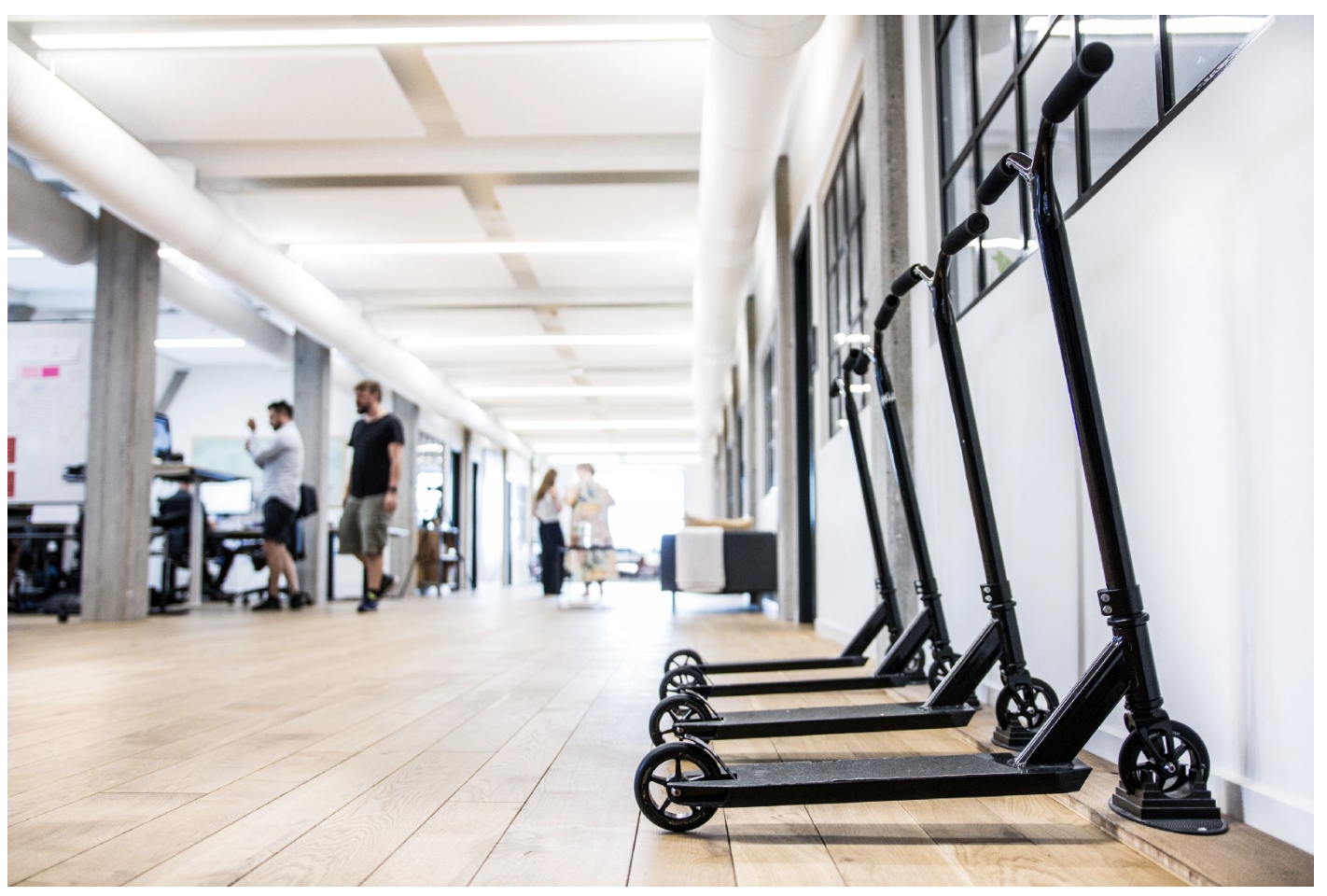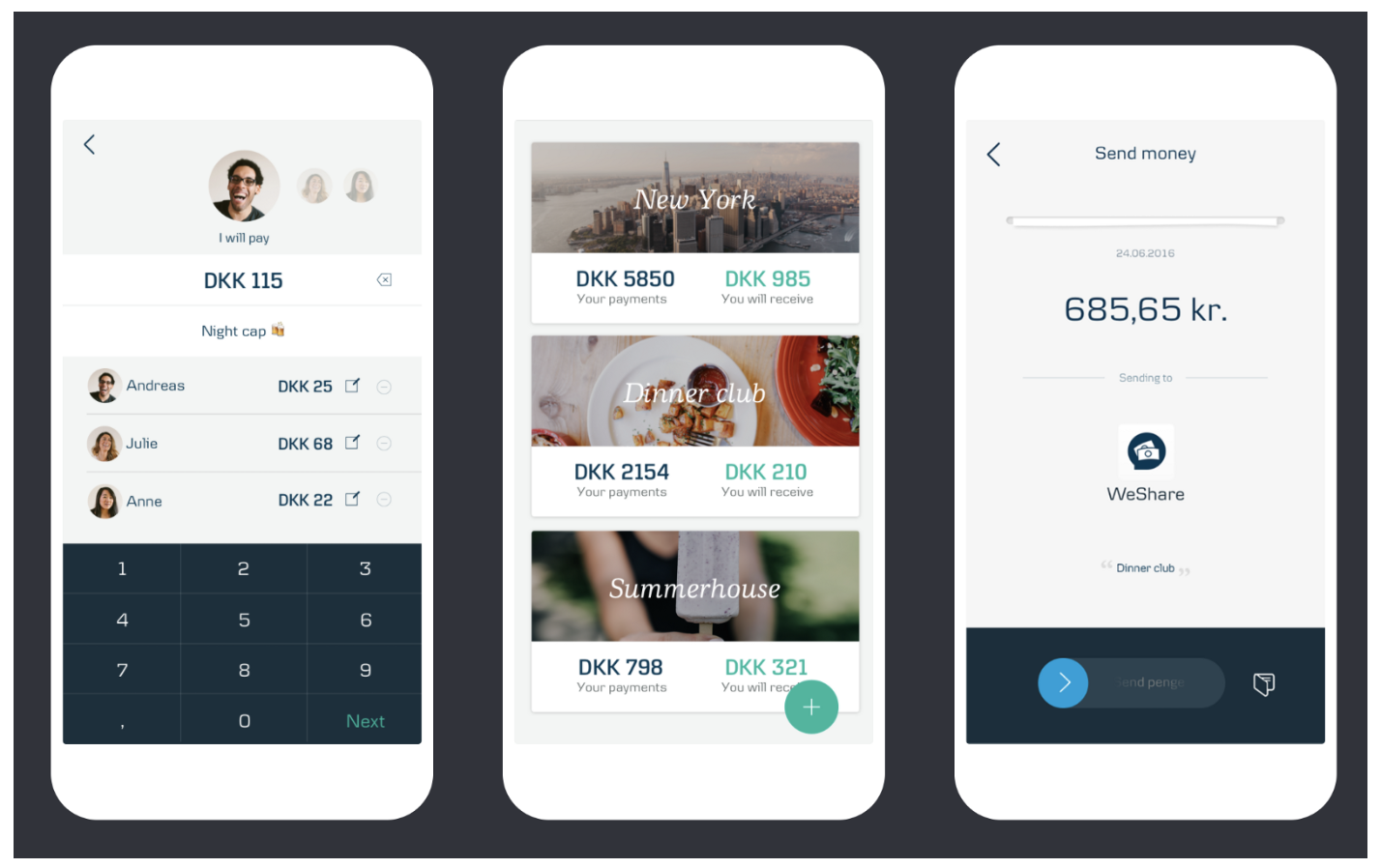How an inclusive culture, diverse teams and a focus on learning will strengthen your company’s design capabilities
In October 2015, Danske Bank’s MobilePay team asked us for help to create the concept and design for an app that could split a bill between friends. At the time, we’d been working with the bank, the largest in Denmark and one of the most influential in Scandinavia, for two years.
So we brought together a group of people with very different backgrounds, skills and approaches to co-create with us at our office in Copenhagen. Though it’s an intense process and takes a little time to adapt to working this way, the results were a testament to why a diverse mix of people generate better products.
Working together in the same physical space means communication is more open, decision making is quicker, and the pace of work and discovery is accelerated. It was such a success that it’s become the norm for how we work with our clients today.
Agility requires velocity and purpose
Branding choices, interaction design and information architecture, user testing and concept validations occurred within one week sprint cycles over a two-month period. At the same time, technical architecture was being set up and we provided the documented flows for the developers from Trifork as they were needed and we continually iterated on the design with them on a test server.
The product was launched nine months after the project kick-off, and considering the implementation complexity and existing product integrations that were involved, it was a short turnaround.
Agenda for the project kick-off with the WeShare product team
Co-creation demands an inclusive work culture
But large companies can struggle when teams work in many different locations. The communication tools and ceremonies needed to ensure a minimum level of timely decision-making demand special attention from the team. It means that it’s far better to allocate focussed face-time for all team members to sketch ideas together, defend and argue for the design details, and to ensure the ultimate experience can be achieved.
But it’s an intense and often exhausting way of working that needs to be carefully managed.
As a team lead you need to be aware of when to give space to produce, when to talk, and when to move on. And the team members must have a can-do attitude, and their characters must complement one another.
Lastly, team members need to recharge and have time out from each other. The idea is to progress with pace — even though it might not be to everybody’s liking. When the work is carefully structured and managed, the result is powerful.
Initial sketches for the WeShare interface
Design insourcing is a trend — but is it always a good one?
It’s fully understandable and wise to build design competence internally — especially now that so much of the customer experience is handled within digital interfaces, and the interconnected services that play out in the analogue space.
At Hello, we often find that the companies we work with have a maturity with regards to digital products and services, and are ready to adopt new working practices to help achieve their ambitions. And usually, the IT part of the organisation will have well-drilled methods to enable them to execute on their project backlog.
However, this is often not in sync with the market forces at work outside of the organisation, or with the people responsible for developing the business within it. The speed of change that customers now demand means that those that build these products and services are under a lot of pressure, and find it a real challenge to deliver in a timely manner.
Add to that the tendency to make-do and accept operating practices as ‘just the way it is’ and you can see how companies struggle to produce innovative, quality customer experiences.
Overcoming the challenge
So how do you drive innovation, plan for agility, and assemble a great team who can learn from one another, and create something your customers will find useful?
Learning from experience, we find that the solution is to ensure your product development team has a diverse mix of skills that can be enhanced by external actors, and that the organisation is able to learn from this.
With WeShare, the MobilePay team from Danske Bank who sat with us during the design of the product, provided both design sparring and the subject matter expertise. And for product ideation and build, we maintained a very close collaboration with the developers at Trifork.
From our side at Hello, Thomas Høgild (Experience Design Lead) interacted with the developers throughout the project to ensure that the envisioned product would be realised, and was in constant dialogue with the client and developers about the goals and objectives of the project.
One team, in three groups, performing their individual tasks in close collaboration.
The final product screens
Diversity creates a design culture beyond a corporate one
Now you could argue that all that expertise could have been staffed internally, as the client certainly had the resources available. But would the result have been the same?
That depends on the process you work to and the mindset you employ. We challenged the initial brief considerably, as we were determined to give an otherwise feature-oriented focus, a human-centred angle.
Throughout, the dialogue between the client and the team was progressive and challenging, and occurred naturally because we think from a customer perspective by default. It’s not a forced state of mind, but a mindset that is ingrained in how we design.
A process where you can trace every feature or functionality all the way back to the human insight.
This way of thinking becomes a micro-culture that’s shared within the team. Regardless of who the participants work for — the goals are shared — and the ways of reaching them are too. A culture, after a period of time, can become homogenous, so there needs to be a focus on demanding a continuous influx of new perspectives. This can come within through cross-collaboration between business units or alternatively collaboration with an external partner to provide this source of new and challenging inputs.
It becomes a codified state of mind to create hypotheses and discover findings through experimentation. The hypotheses are embodied in something we call an experience story that enables us to visualise the ideal state of human experience when people interact with a product or service. We test and learn, modify and test again. But we do it with the greater purpose always in mind.
Digital transformation is a mindset as well as a method
This mindset of learning-while-doing flies in the face of being paid to know, and taking a position based on accumulated knowledge.
We’re at a point in time where technology is moving so quickly that societal norms are being disrupted, and making predictions is useless. Industrial age working practices are redundant at best, and destructive at worst.
If an organisation reacts to this pace of change without the correct working setup, it can cripple the business. Just look at Kodak and Blockbuster. Even if the balance sheet looks really good today, the forces of change can render a company meaningless to a customer very quickly, particularly if the experimentation and discovery mindset doesn’t occur at all levels of a business. At every level, from IT to HR, this way of thinking has more relevance than ever before.
It’s not a process to be applied, but an acknowledgement that learning as an organisation with a considered and structured approach will enable a better quality of products and services to emerge. And ultimately, using the method and cultivating the mindset will lead to a transformation of your organisation that is much more impactful than the success of a single product or service.
If your company struggles with innovation, try to honestly answer these three questions…
Does your company methodically learn from failures?
Either from retrospectives, or other methods of gathering and reflecting on why the project failed.How does your company act on the inputs?
It’s all very well to look at the problem, but how you act as a company when you address the issues will send a clear signal to your team members and your customers. Be mindful of how you communicate this, and how you follow up on actions.Do you measure improvement in your organisation?
You should see development in your people, and the products you release should rise in quality from a customer perspective (typically an NPS rating). This is both HR and Sales related, and both have an important part to play in the innovation potential of companies.
Never underestimate the power of diversity
There is no silver bullet for nailing the next innovative product or service. However, if the makeup of your teams is diverse, you’re more likely to create a customer-centred solution that has the human, business and technology angles covered.
The aim should be to work with qualified subject matter experts steering the business case, with human centred designers and developers using the most appropriate technologies creatively.
If there is independent representation in these three areas, a product can be built without adversely impacting internal IT resources. It will also offer learnings to the company to enable innovation efforts to grow in the future.
And finally it will give a greater chance of creating something that your customers, and maybe even your peers, will love you for.
Read more about our work with WeShare and MobilePay here
Thanks to Thomas Høgild and Kathryn Casey





